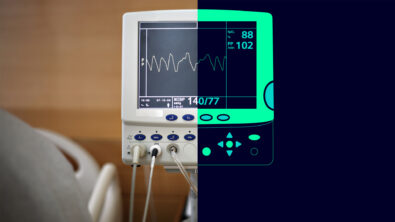Why design control is essential for medical device development: Overcoming challenges with digital solutions

Your devices prevent, diagnose or treat diseases and contribute to patient recovery. With such high expectations for medical devices, controlling the design process is crucial to avoid risks, errors and misuse. So, how can you ensure your device design is safe and effective throughout its lifecycle? Let’s explore why design control is essential, common challenges in the design process and how digital solutions like Siemens’ Product Lifecycle Management (PLM) for Medical Devices can help.
What is design control?
According to the FDA, design control starts with developing and approving design inputs and applies to all changes to the device or manufacturing process design. It’s not a one-time task that ends with production transfer, but is revisited many times throughout the product’s lifecycle. Regulations such as US 21 CFR Part 820 and EU MDR/IVDR play a key role in ensuring a comprehensive quality system.
The importance of design control
Why is design control so important? Designing quality into the device ensures safety and efficacy while avoiding costly manufacturing and performance issues downstream. It helps manufacturers adhere to quality standards, maintain regulatory compliance and continuously monitor device performance. This ongoing process supports traceability and onnections between data, which are critical for ensuring device safety and effectiveness.
Challenges in the design process
Despite its importance, design control can be challenging to implement, monitor and improve. Here are some common hurdles:
• Inefficient communication and coordination: Different departments, like engineering, quality and marketing, share responsibility for design controls, which may lead to communication gaps.
• Incomplete information history: Even with systematic assessment, maintaining a continuous and complete information history can be difficult.
• Inconsistent data: Due to the interdependencies and correlation of information needed at each step, data may not always be consistent or interconnected.
These inefficiencies can lead to several issues, including:
• Audit challenges: Slow access to evidence and poor-quality data can impact audit findings.
• Product recalls: Incomplete or inaccurate regulatory files like the Design History File (DHF) can trigger recalls.
• Market delays: Poorly organized design control processes can delay device market introduction.
Overcoming challenges with digital solutions
Given these complexities, how can you make your design control process more effective? The answer lies in deploying an integrated approach with enhanced design control and risk management. By using a comprehensive and pre-configured digital solution like PLM for Medical Devices, you can ensure your device design is safe, compliant and continuously monitored throughout its lifecycle. Let’s explore this a bit more.
Ensure design safety and effectiveness
To ensure the quality and safety of your device design, you need to support traceability and data connections at every step of the process—risk management, design input, design output and verification & validation. This comprehensive approach helps maintain the integrity and safety of your product.
Continuous monitoring
Design control is a cyclical process involving iterative actions, feedback loops, review steps and continuous improvements. Continuous monitoring is vital for creating innovative devices, defining new team approaches and enhancing quality and features. With digital tools, you can ensure your design process is never static but always evolving.
Compliance with regulations
Compliance is only achievable with complete, relevant and up-to-date information. Digital solutions help maintain a comprehensive DHF, ensuring no information falls through the cracks and that your submissions to health authorities are accurate and timely. Consistent application of design control elements across teams and projects is also crucial for regulatory compliance.
The benefits of PLM for Medical Devices
PLM for Medical Devices is one of the tools in Siemens’ Design Control for Medical Devices offerings. It’s an industry-specific Teamcenter X solution that offers a pre-configured, SaaS PLM to tackle design control challenges right out of the box. Here’s how:
Data management: Teamcenter provides a single source of information for all product and process data, accessible through an easy-to-use browser-based interface.
Enhanced collaboration: Teamcenter enables visibility into related product and process information, ensuring teams are in sync and errors are reduced.
Improved efficiency: Digital tools support live drill-down into information, discussion boards for team interaction and intuitive data management, transforming team performance.
Regulatory compliance: Teamcenter helps manage and organize DHF and other technical documentation according to compliance expectations.
Risk analysis: Adhere to ISO 14971 standards to enhance risk and requirements management.
Simplified change processes: From simple to complex, PLM for Medical Devices offers configurable change processes that help maintain compliance and efficiency.
Streamlined design transfer: Track and release the Device Master Record (DMR) to production, known as design transfer.
Verification management: Provide visibility into necessary verification and validation (V&V) and ensure that your medical device complies with specific needs.
Take the next step
Ready to enhance your design control process and ensure the safety and compliance of your medical devices? Try out our 30-day free trial of PLM for Medical Devices or contact us today to see how our Teamcenter X industry solution, PLM for Medical Devices, can transform your development process.


